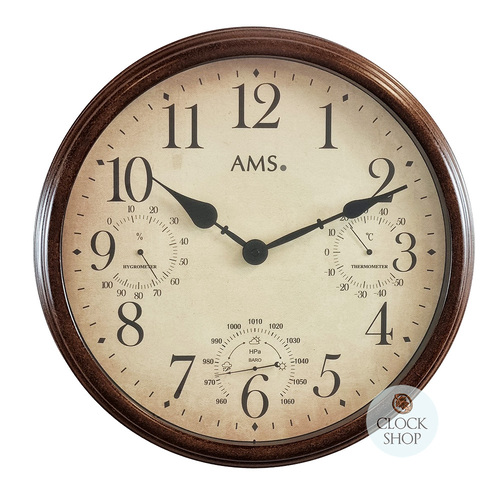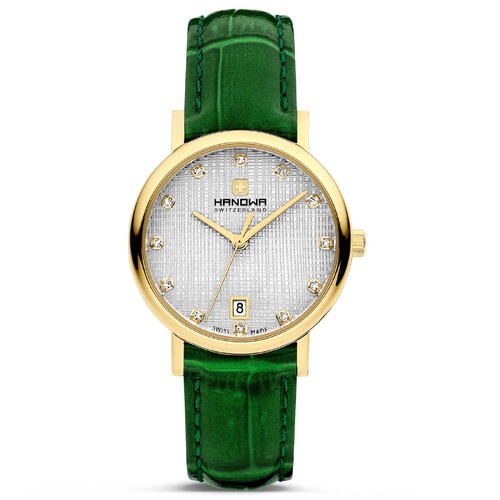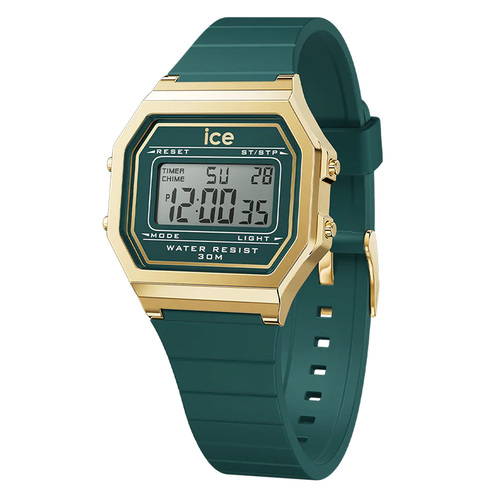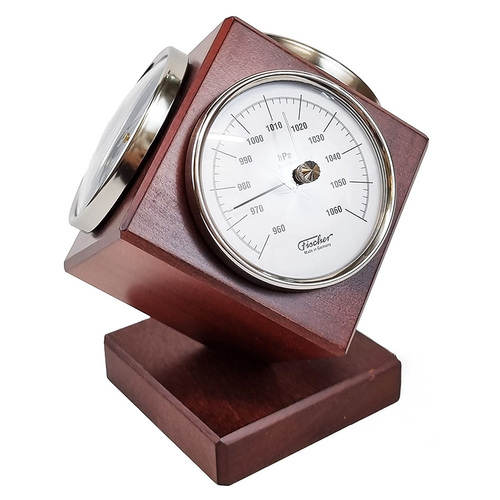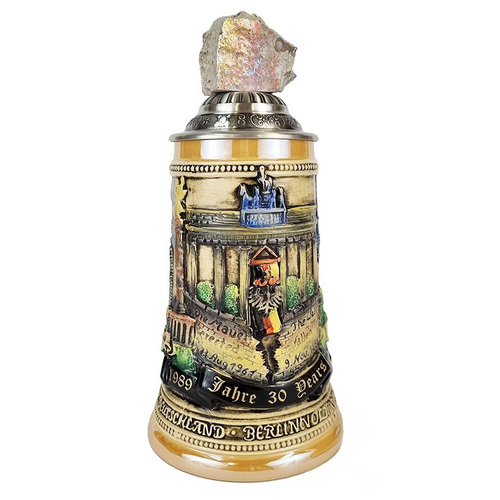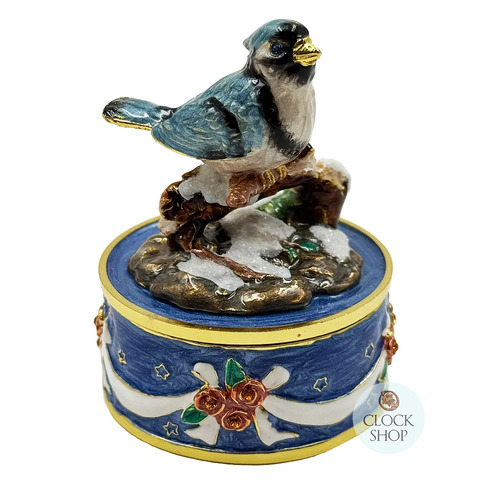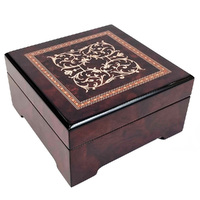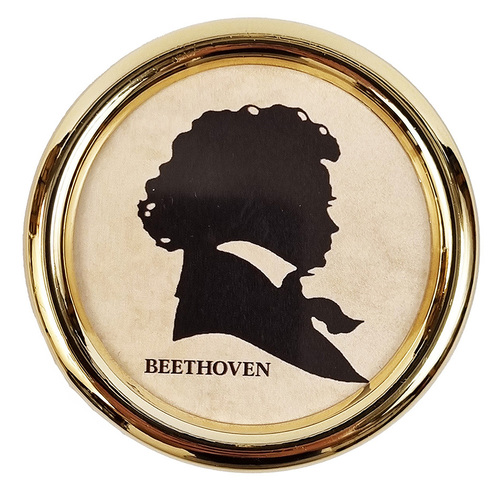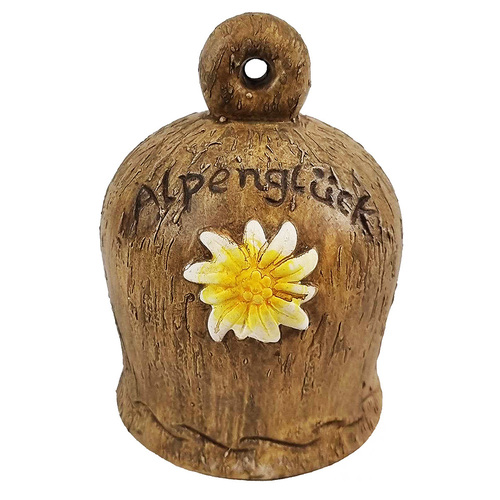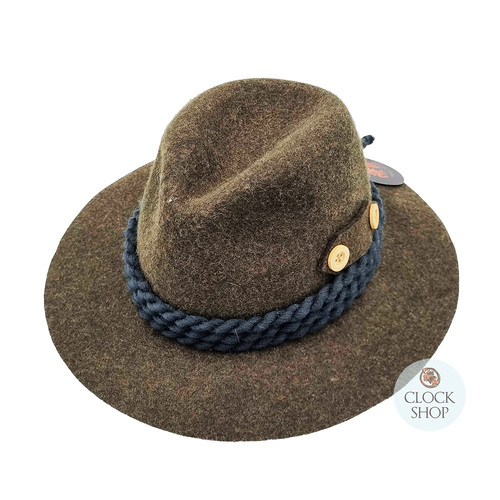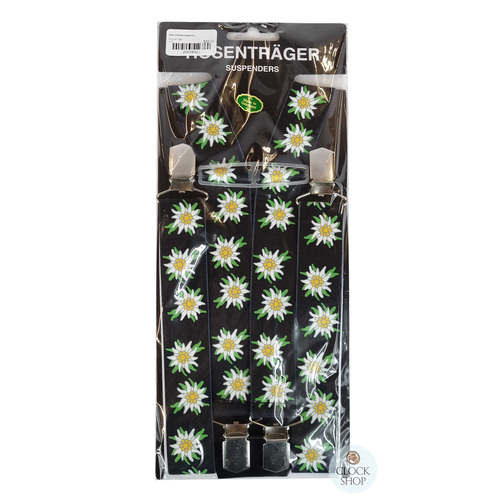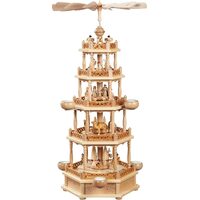German Christmas Pyramids - A Symbol of Light and Hope
Author: Clock Shop Date Posted:2 November 2021
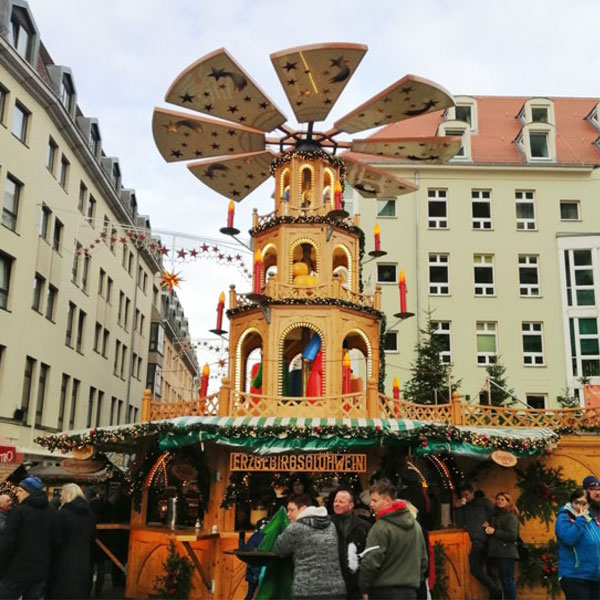
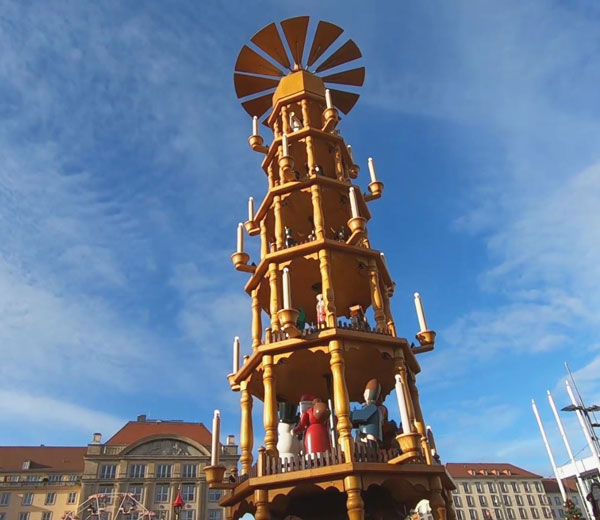
Worlds Largest Christmas Pyramid - Dresden Striezelmarkt
Germany has always held a deep and special connection with Christmas. The very first genuine Christmas markets (known as Striezelmarkt) were held 587 years ago in the city of Dresden, and are still continuing today, with hundreds of additional Christmas markets dotted all over the country. At almost all of these markets, traditional Christmas decorations are sold by the various vendors, many of which originated in a region called the Erzgebirge, otherwise known as the Ore Mountains, located along the Germany/Czech Republic border. Having served as a natural border between Bohemia and Saxony for 800 years, the Erzgebirge was the first mining district in Europe, dating back to 2500 BC when tin was traded during the Bronze Age. Commonly referred to as the ‘Home of Christmas’, there is a deep and special link between the Erzgebirge, it’s mining history and traditional Christmas decorations, a place where Christmas traditions have been handed down through the generations for hundreds of years.
The Original Christmas Pyramid
The Erzgebirge was an active and booming mining region for thousands of years- and in particular during the 1700’s when the mining community was thriving. In order to ensure there was enough oxygen in the mines to work safely, the miners of the local villages would bring along their own handmade pyramid creations into the mines. Originally referred to as ‘light racks’, these designs were simple- crafted of several sticks tied together and formed into a basic pyramid shape, with some candles placed at the base. Burning the candles would tell the miners that there was oxygen in the mines, whilst also serving as a beacon reminding them of the light and warmth waiting for them when they finished work. Just over a century later at the end of the 1800’s, the mining boom ceased entirely, forcing the miners to find another way to make a living. As many of these miners' families had lived and worked within the same communities for generations, rather than move to the larger cities to find work, they instead utilised trade skills that had been handed down to them over the generations in a bid to make ends meet. As a result, the region quickly became filled with artists, glass blowers, woodworkers, blacksmiths and artisan craftsmen who produced wooden toys and decorations to sell to the surrounding villages. These folk art and handicrafts included nutcrackers, smoking men, candle arches, small Christmas ornaments, wooden angels and figurines along with Christmas pyramids- all well known and loved Christmas decorations of today- all of which are still traditionally produced in the Erzgebirge as they have been for hundreds of years.
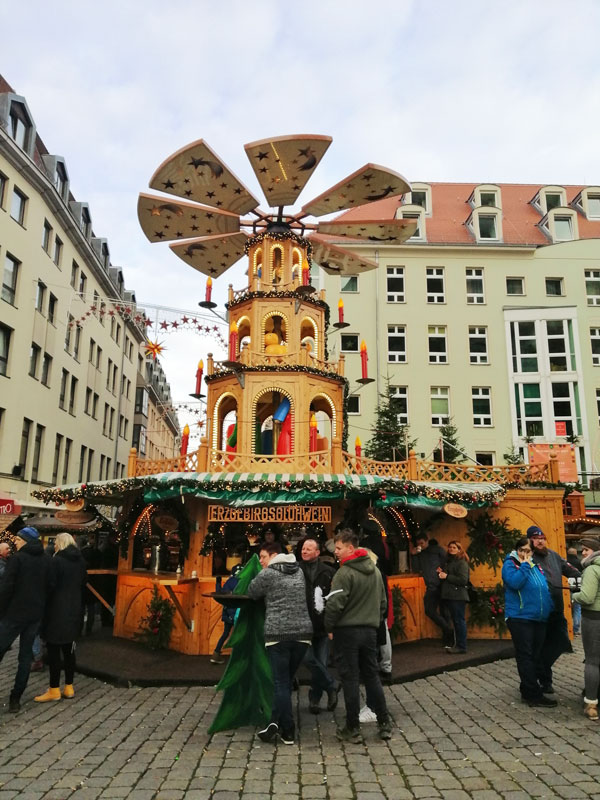
Market Christmas Pyramid - Dresden
The Evolution Of Christmas Pyramids
The picturesque mountain villages in the Erzgebirge including Seiffen, Olbernhau and Marienberg, represent the heart of wooden toy and Christmas decoration carving including Christmas pyramids. Originally designed to serve as a means of light inside the mines, the original Christmas pyramids and the later designs had little movement involved. They were originally designed with stands made from wooden rods. Eventually, shelves were attached to a central rod to hold wooden figurines, with a pinwheel at the top. Over time as these designs grew in popularity, they became more complex and animated as a variety of design features were added. These included the addition of candle dishes and hand carved wooden decorations and figurines in a variety of scenes. When burning candles were placed at the base of the pyramid, the rising air turned the pinwheel blades and the shelves would rotate. Over time, Christmas pyramids have evolved into more beautiful creations that have become synonymous with Christmas, changing significantly from their original construction produced for use within the mines of the Erzgebirge. As the popularity of Christmas trees increased during the 19th century, Erzgebirge craftsmen altered the design to more resemble the shape of a pyramid, serving as the precursor to the more commonly known Christmas tree. Today Christmas pyramids are available in a wide variety of sizes including for the home, as well as existing as large structures at the various Christmas markets of Germany, including the world’s largest pyramid that stands 14 metres high at the famous Striezelmarkt in Dresden- the very same site where the Christmas markets originated in 1434. Just as they did for the miners hundreds of years prior, these modern day pyramid structures also serve as a beacon for those searching for the Christmas markets.
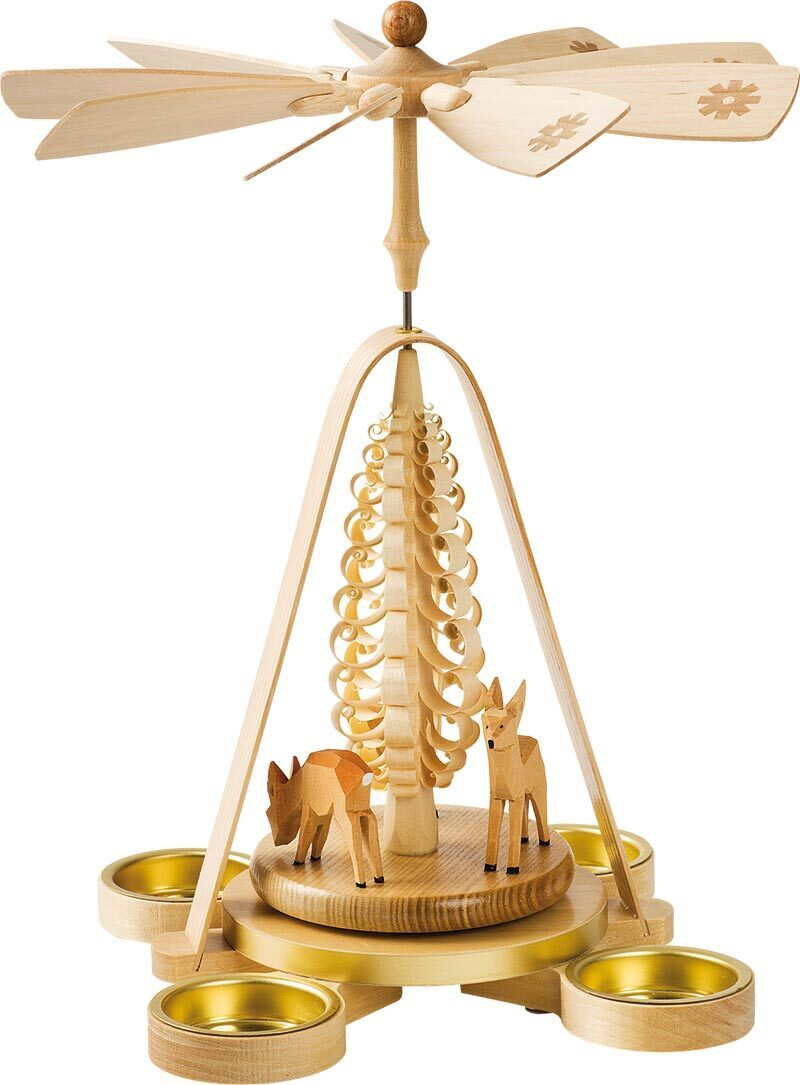
The most important and beautiful feature of a Christmas pyramid is light - this feature has remained the same for 200 years. Not only does light set the pyramid in motion, it also serves as the symbol of life, with its origins deeply linked to the original beacon of hope first used in the mines. Today, even though mining has ceased in the Erzgebirge, the villages still honour the miners who spent the majority of their lives in the mines by lighting up the windows, streets and village squares at Christmas time with Christmas pyramids, candles and lights in respect and honour. Today, the residents of the villages in the Erzgebirge still practise these Christmas rituals and traditions, producing decorations using traditional methods that have been handed down through the generations. In one form or another, Christmas pyramids have always served as a beacon of light and hope, and knowing this rich history makes owning one even more special.
If you are considering adding a traditional German decoration to your home this Christmas why not consider adding an authentic Christmas pyramid from the Clock Shop. We supply a fantastic range of Christmas pyramids available in a variety of sizes that range from 13cm in height through to an extravagant pyramid that stands 70cm tall with five rotating tiers. Two of our suppliers, Seiffener Volkskunst eG and Richard Glaesser, are based in the Erzgebirge, both of whom craft these traditional items of the highest quality. Clock Shop receives new stock every year that keeps up to date with the latest trends, whilst also upholding the longstanding traditions that Erzgebirge Christmas Decorations are world famous for.
Browse our entire range of traditional and authentic Christmas pyramids here: https://www.clockshop.com.au/christmas-souvenirs/pyramids/
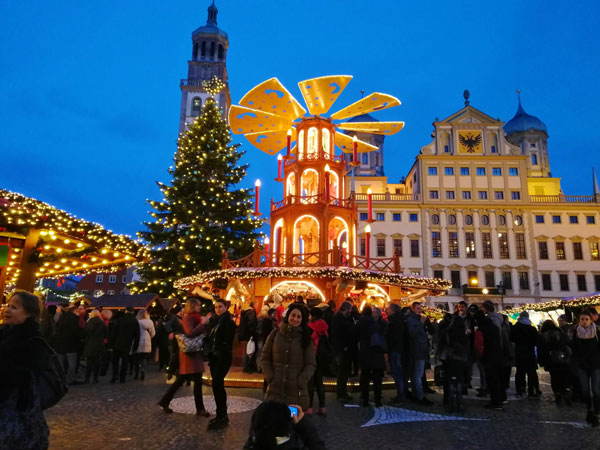
Christmas Pyramid - Augsburg
Comments (1)
So interesting!
By: Suzanne R on 4 November 2021This is such an interesting article. I had no idea of the history and traditions connected to the Christmas Pyramid, thank you for the info.

